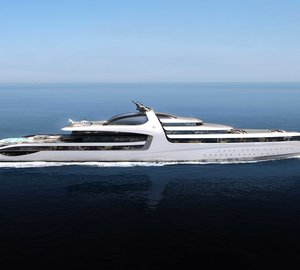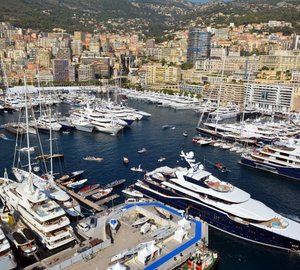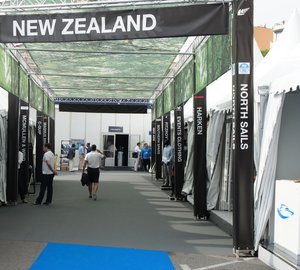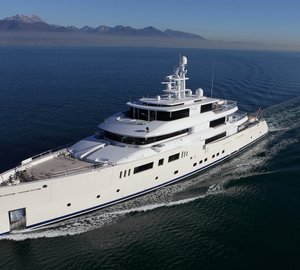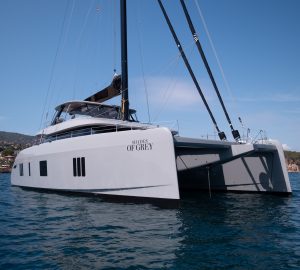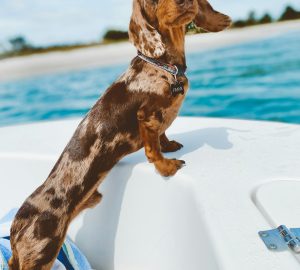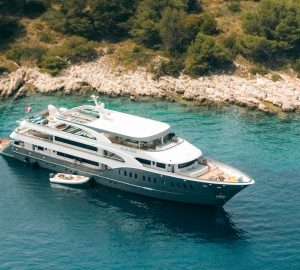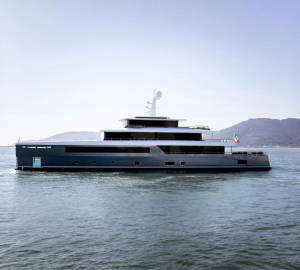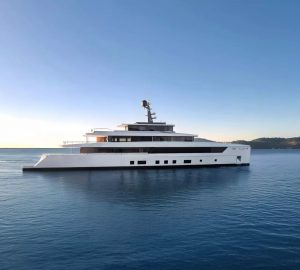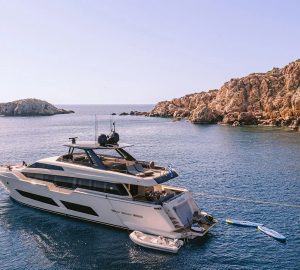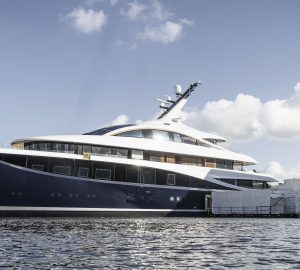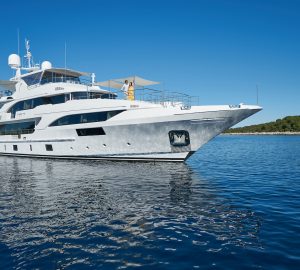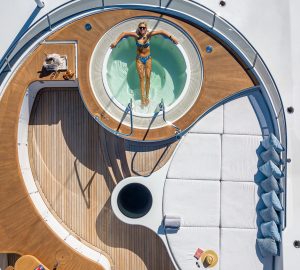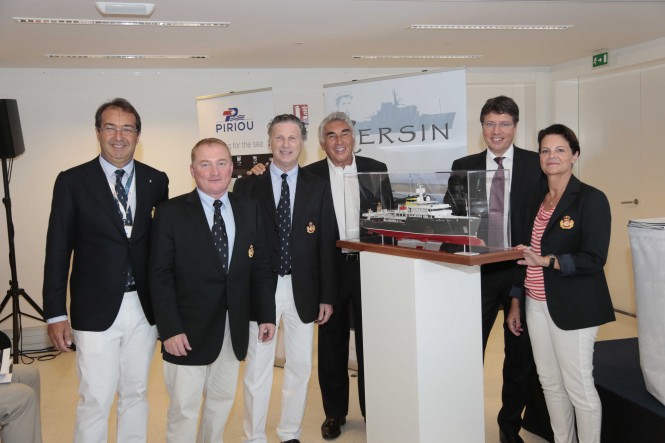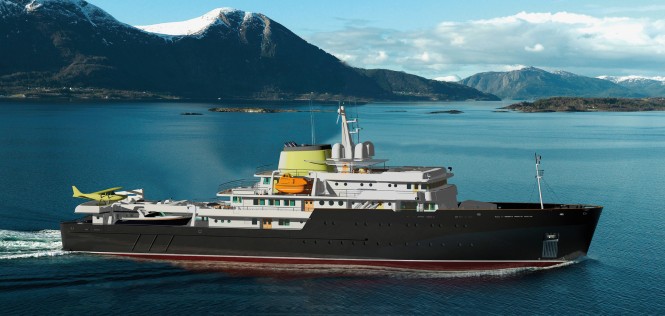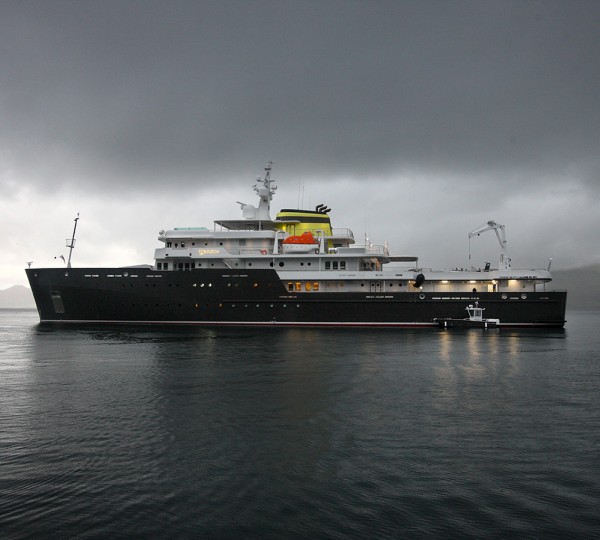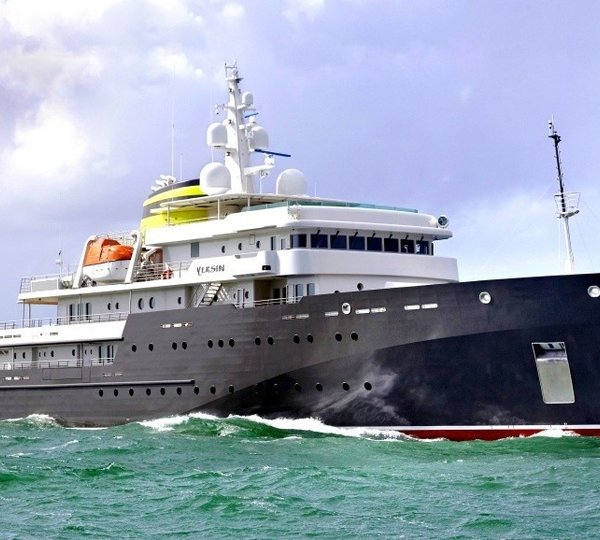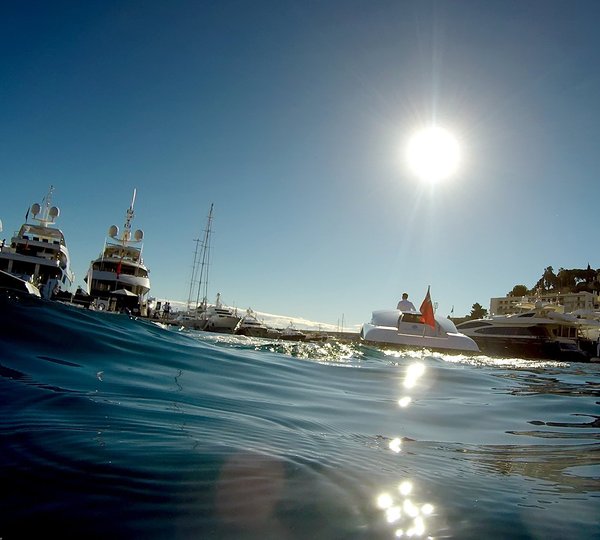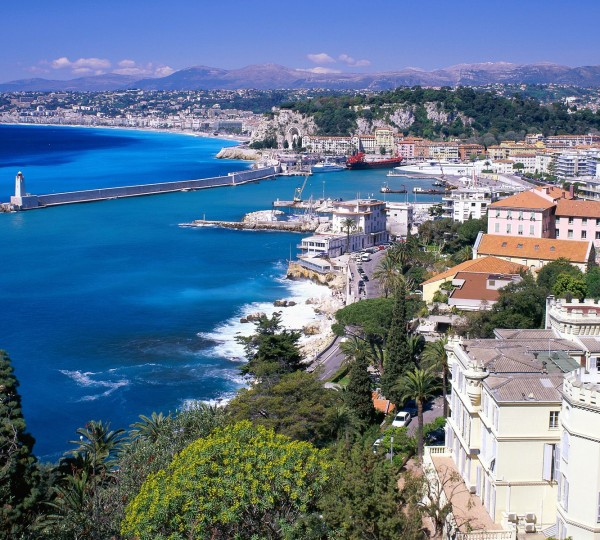During the last week’s Monaco Yacht Show and within the framework of La Belle Classe Superyachts, a label presented by the Yacht Club de Monaco in 2005 to support owners in their navigation as well as choice of ports of call worldwide, Francois Fiat, the first La Belle Classe Superyachts Ambassador, introduced his new ship, the 77m expedition yacht Yersin, on September 26, 2014.
Being built in France by the Piriou shipyard based at Concarneau in France, the 77m explorer yacht Yersin has been designed to navigate in any conditions, including ice exploration.
A veritable concentration of eco-friendly technology, it upholds all the maritime values La Belle Classe defends, including protecting the environment and promoting innovative technologies. The M/V Yersin is the tool for achieving a project called A.S.E. (Adventure – Science – Education).
The press conference gave a preview of the advanced technology developed and utilised on this multi-purpose transoceanic ship. Designed to take passengers, the vessel has an autonomy of 12,000 nautical miles and 50 days without having to take on supplies, avoiding any exterior or interior pollutant releases. It is an aspect that perfectly illustrates the ship’s motto: Leave an imprint without leaving a trace. Among the many innovative features is the fact she can accommodate a seaplane.
Encouraged by the Prince Albert II of Monaco Foundation, the vessel will contribute to the preservation of our planet, with the support of researchers and scientists from all over the world, and the participation of young children and students.
The M/V Yersin has chosen Monaco as her “emotional” home-port where she will be officially christened in June 2015.
Technical specifications of M/V Yersin:
Length: 77m
Beam: 13m
UMS tonnage: 2,300
Capacity: 20 passengers and 20 crew
Bureau Veritas: ICE Class IC
Electric propulsion with Schottel system
CLEANSHIP certification
A ship named in honour of Doctor Alexandre Yersin
Doctor Alexandre Yersin (1863-1943) deserves to be better known by the general public. In fact we owe much to this doctor from the Messageries maritimes merchant shipping company, who spent 50 years in Indochina where he founded the Nha Trang Pasteur Institute and, in 1902, the Hanoi Medical School. His research into the diphtheria toxin and discovery of the bacillus behind the bubonic plague in 1894 earned him international recognition, after which he dedicated his life to the local people of the future Vietnam.

